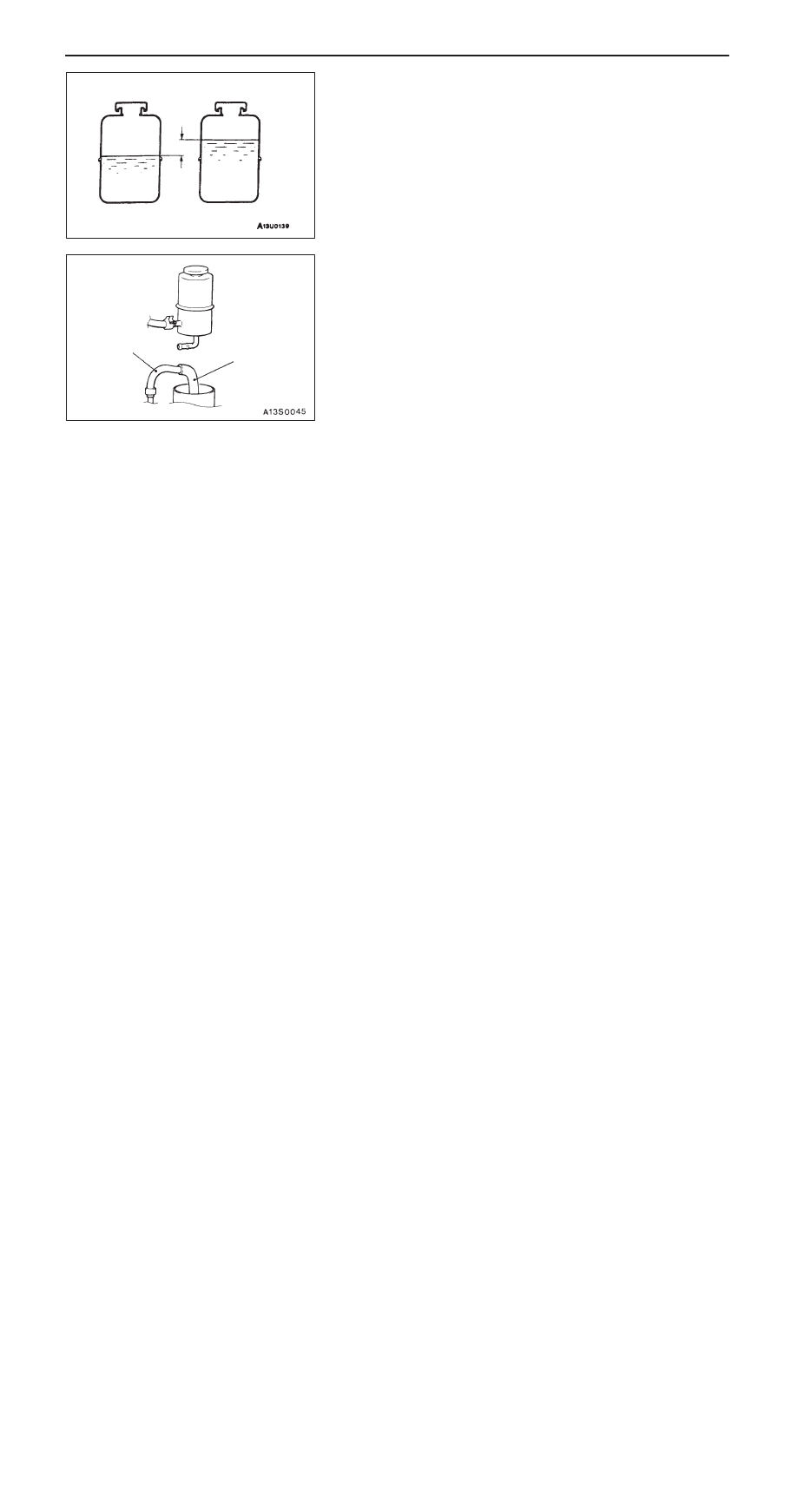Mitsubishi Pajero Pinin. Manual - part 262

STEERING –
On-vehicle Service
37A-9
POWER STEERING FLUID LEVEL CHECK
1.
Park the vehicle on a flat, level surface and start the engine.
Without the vehicle moving, turn the steering wheel several
times until the fluid reaches 50 to 60
_
C.
2.
With the engine running, turn the wheel fully left and right
several times.
3.
Check the fluid in the oil reservoir for foaming or milkiness.
4.
Check difference in fluid level between the engine stopped
and running. If the difference is 5 mm or more, bleed
air.
POWER STEERING FLUID REPLACEMENT
1.
Jack up the vehicle and support the front wheels with
rigid racks.
2.
Disconnect the return hose.
3.
Connect a vinyl hose to the return hose and drain fluid
into a container.
4.
Disconnect the ignition coil connectors. (Refer to
GROUP16 – Ignition System.)
5.
Cranking the engine several times intermittently with the
starter, turn the steering wheel fully left and right to drain
the fluid.
6.
Connect the return hose and secure it with the clip.
7.
Fill the oil reservoir with specified fluid up to between
“MAX” and “MIN” marks, and then bleed air.
Specified fluid:
Automatic transmission fluid
DEXRON or DEXRON
II
Caution
Do not use ATF-SP
II
as it damages the components
of the power steering.
POWER STEERING SYSTEM BLEEDING
1.
Jack up the vehicle and support the front wheels with
rigid racks.
2.
Disconnect the ignition coil connectors. Cranking the
engine with the starter several times intermittently (during
15 to 20 seconds), turn the steering wheel left and right
fully five or six times.
Caution
(1) During the bleeding, refill the fluid so that the level
is always above “MIN” mark on the oil reservoir.
(2) Be sure to bleed air only while cranking. If the
bleeding is done with the engine running, the air
will be broken up and absorbed into the fluid.
3.
Connect the ignition coil connectors and idle the engine.
4.
Turn the steering wheel left and right fully until no bubbles
comes out in the oil reservoir.
5.
See that the fluid is not milky and that the fluid level is
between “MAX” and “MIN” marks.
6.
See that the fluid level changes little when the steering
wheel is turned left and right.
7.
Check difference in fluid levels between the engine stopped
and running.
Fluid level change: Within 5 mm
While engine
running
While engine
stopped
Return hose
Vinyl hose